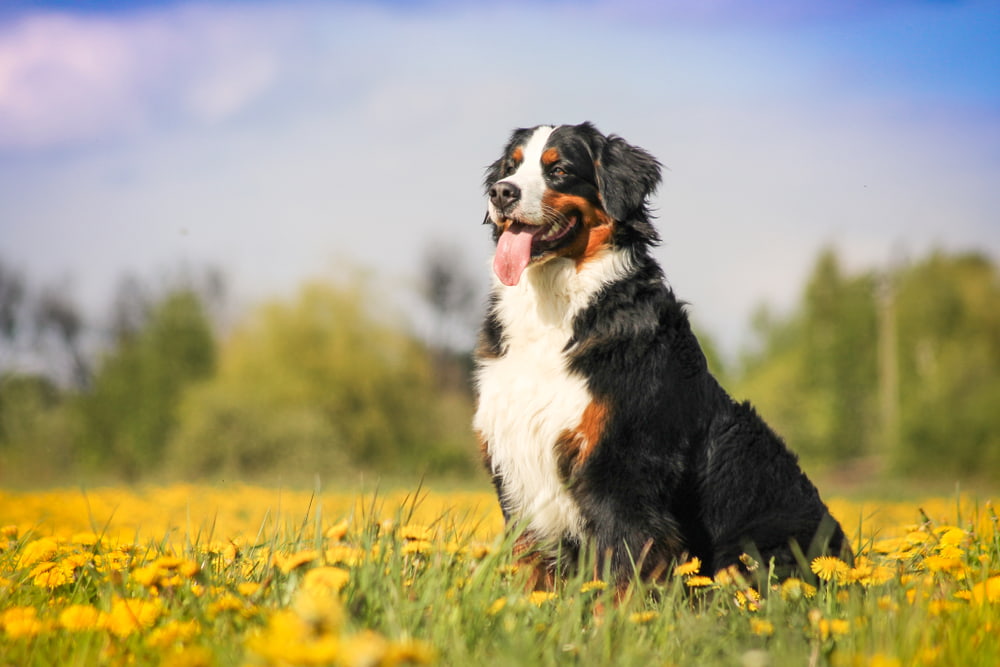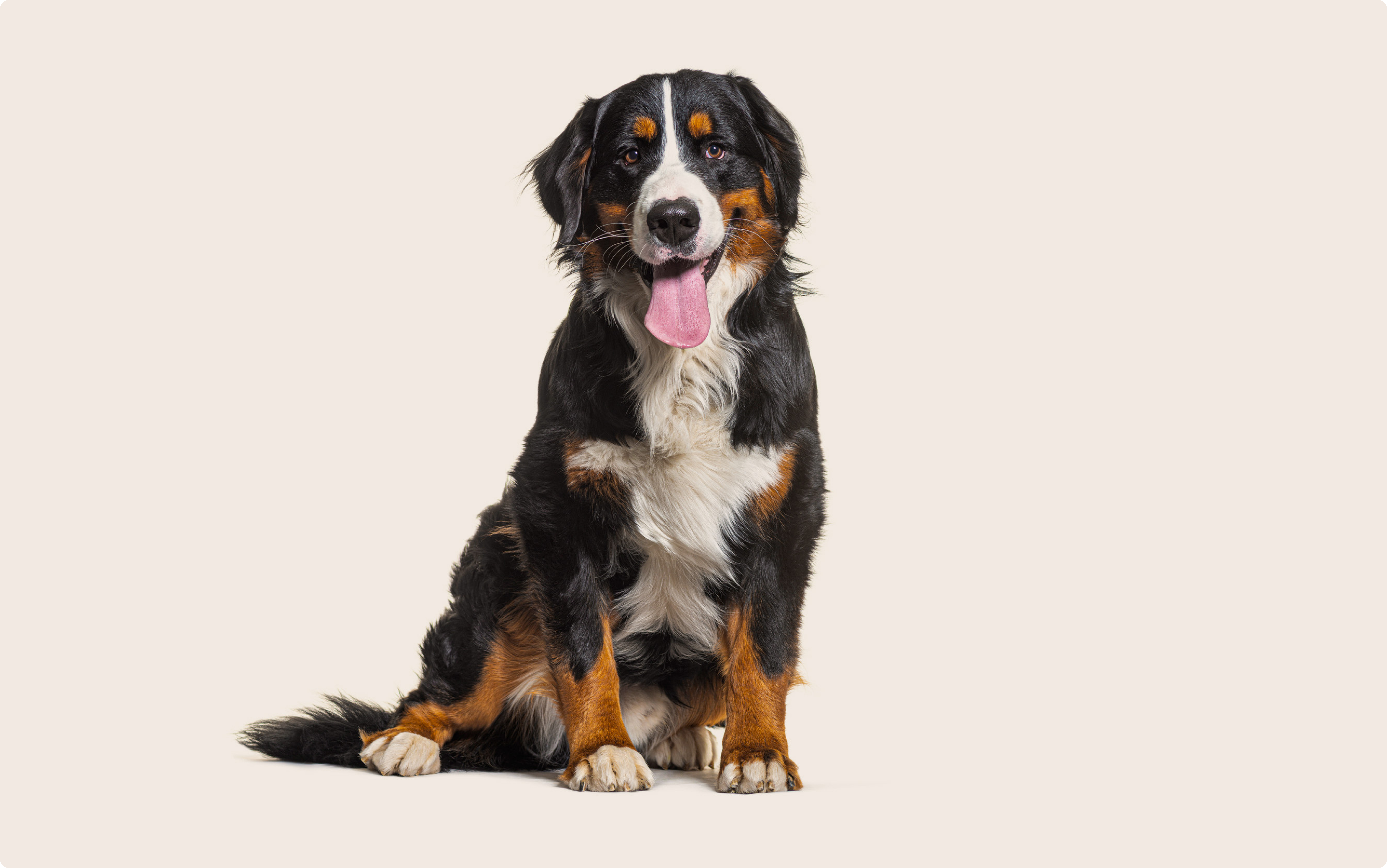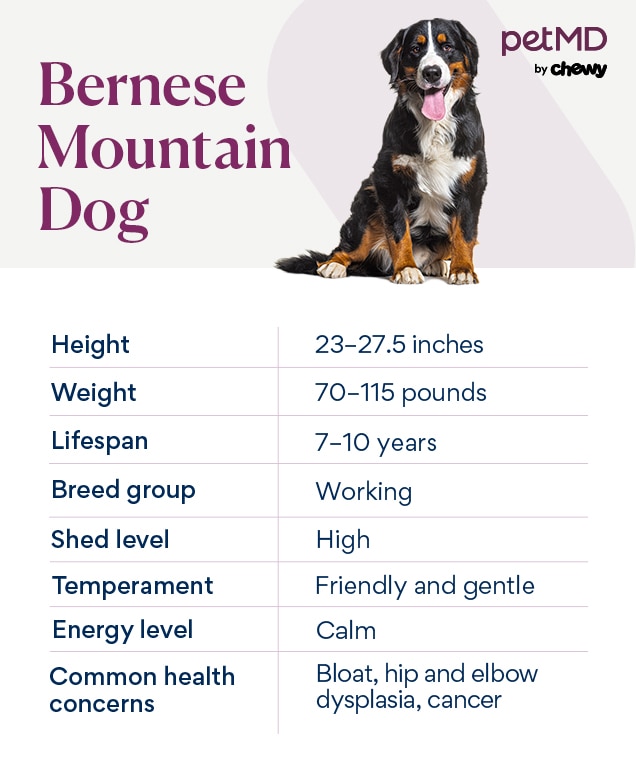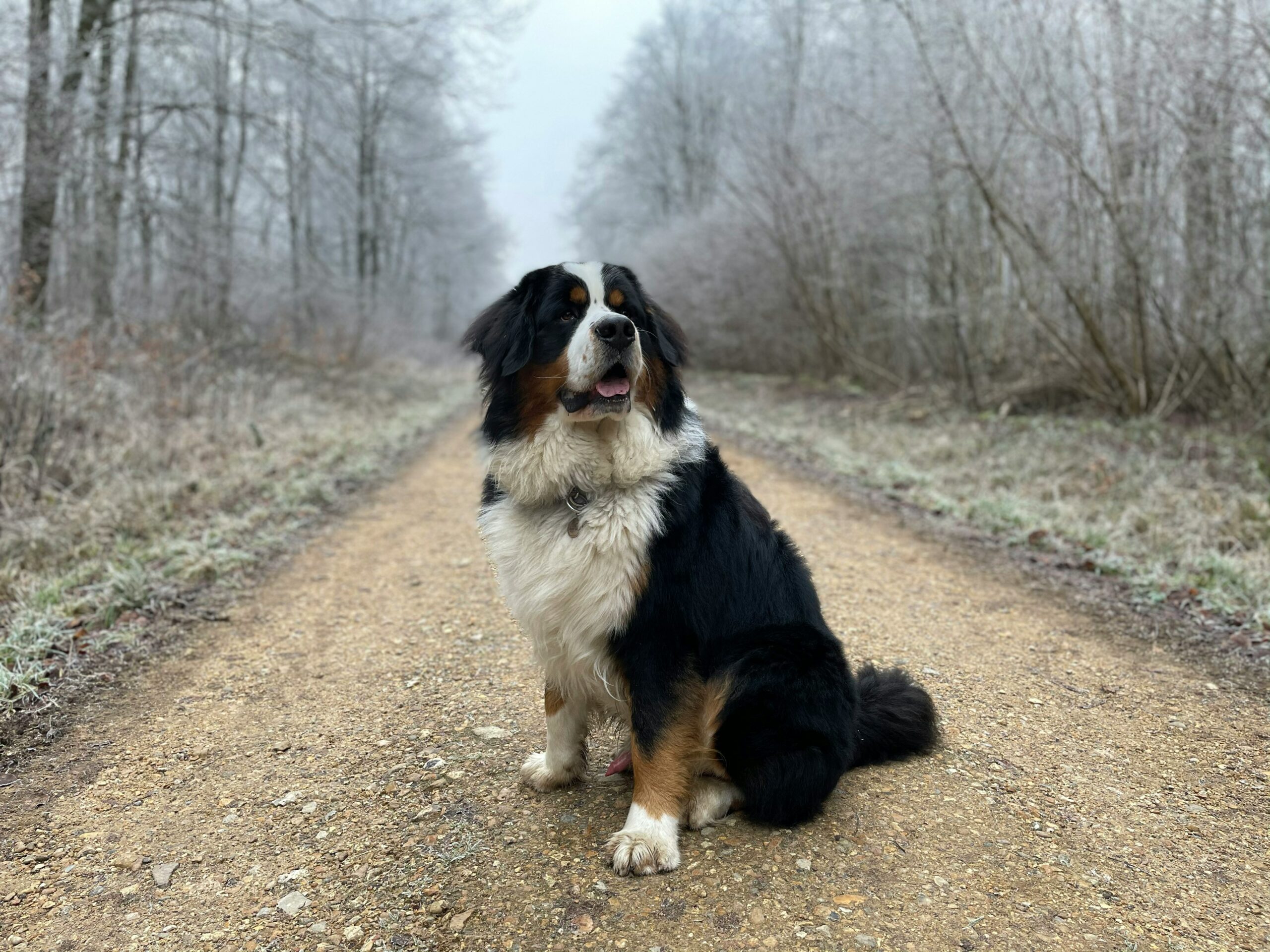
History and Origin of the Bernese Mountain Dog
Introduction to the Bernese Mountain Dog Breed
The Bernese Mountain Dog, often affectionately known as the Berner, is celebrated not only for its striking beauty but also for its remarkable versatility and gentle temperament. These large, sturdy dogs have roots that stretch back over two millennia, making them a significant part of Swiss agricultural history. As farm workers or “farm-to-global-icons,” these gentle giants have earned their place in many families’ hearts across the globe.
It’s hard not to admire these dogs; they embody loyalty and affection, effortlessly fitting in as both hardworking companions and loving family pets. Some may even recount stories of Berners curling up next to children for a cozy nap or eagerly participating in outdoor adventures with their families. With their wonderful tricolored coats and loving dispositions, Bernese Mountain Dogs have transcended their working origins to become beloved companions in modern households.
Origins of the Bernese Mountain Dog in Switzerland
The history of the Bernese Mountain Dog can be traced back to the picturesque canton of Bern, Switzerland. These dogs were developed from the unique amalgamation of Roman mastiffs brought in by soldiers and local herding breeds. This mix produced a sturdy dog well-suited to the demands of a harsh Alpine climate, where they performed multiple roles:
- Herding cattle with precision and care
- Guarding farmsteads with their loyal nature
- Pulling carts filled with goods like milk and cheese through rugged terrains
Historically, Bernese Mountain Dogs were treasured for their strength and endurance. They served as invaluable laborers within Swiss rural life. Yet, by the late 19th century, industrial advancements began to render these hardworking dogs obsolete, leading to a dramatic decline in their population. However, a dedicated effort from enthusiasts like Professor Albert Heim reinvigorated interest in the breed. Through careful breeding, they not only rescued the Bernese Mountain Dog from extinction but also established the standard we appreciate today.
With recognition from kennel clubs around the world, including in the United States in 1937, the breed has come a long way from its agricultural roots, embracing its place as a cherished family member in homes everywhere.

Physical Characteristics and Appearance
Description of the Bernese Mountain Dog’s Coat and Markings
Bernese Mountain Dogs are truly a sight to behold with their magnificent tricolor coats that often steal the show. Their luxurious fur, which is long, thick, and slightly wavy, not only adds to their aesthetic charm but serves as functional insulation against the harsh climates they were bred to endure in the Swiss Alps.
- Coloration: The defining feature of the Bernese Mountain Dog’s coat is its striking combination of:
- Black: The primary color covers the majority of the body.
- White: This accent color appears on the chest, face, and tip of the tail.
- Rust: Beautifying details are often found above the eyes, on the side of the mouth, and along the legs.
These distinctive markings create a contrast that enhances the breed’s regal appearance. The overall impression is one of both strength and elegance, a reflection of their heritage as working dogs. Many owners share stories of compliments received on walks, where passerby can’t help but admire their furry companions’ striking looks!
Size and Weight Specifications of the Bernese Mountain Dog
In addition to their beautiful coats, Bernese Mountain Dogs boast impressive physical stature.
- Males: Typically weigh between
- 85 to 110 pounds
- Stand approximately 25 to 27.5 inches tall at the shoulder.
- Females: Generally weigh between
- 70 to 95 pounds
- Stand about 23 to 26 inches tall.
It’s their robust build that enables them to perform the demanding work for which they were originally bred, like pulling heavy carts through challenging terrains. However, their gentle nature often surprises those who encounter them. Despite their size, these dogs are known for their calm demeanor, proving that large dogs can also have a gentle spirit. With such characteristics, the Bernese Mountain Dog is not just a visual marvel but also a loving companion who navigates family life with grace.

Temperament and Personality Traits
Gentle Nature and Affinity for Families
Bernese Mountain Dogs are truly the gentle giants of the dog world. With their kind-hearted nature and loving demeanor, they excel as family companions. These dogs form strong bonds with their families, showcasing an undeniable loyalty and devotion that is heartwarming to witness. It’s not unusual to find a Berner happily following family members around the house, always looking for the next cuddle session or outdoor adventure.
- Affectionate Companions:
- Berners thrive on companionship and are happiest when they’re included in family activities.
- Their calm yet playful disposition makes them ideal for families with children; they often display great patience and tolerance while playing, ensuring a safe environment for kids.
Owners often share endearing stories where their Bernese Mountain Dog instinctively senses when someone needs comfort, offering a reassuring presence during tough times.
Socialization Needs and Behavior with Children and Other Pets
Apart from their gentle temperament, Bernese Mountain Dogs require early and consistent socialization to shine in family settings.
- Socialization Essentials:
- Exposing them to various environments, people, and other pets keeps their social skills sharp and helps them develop into well-rounded adults.
- Their friendly nature typically translates well with children and other pets; Berners often play gently and can become fast friends with their furry companions.
However, their natural protective instincts mean that they can be wary of strangers, maintaining a healthy but non-aggressive alertness.
- Supervised Interactions:
- While Berners are typically gentle, it’s always a good idea to supervise them with smaller pets or young children, especially during initial introductions.
Overall, with proper training and socialization, Bernese Mountain Dogs can seamlessly integrate into any family, bringing joy and warmth to the household. Their amiable nature and loyalty make them cherished members of families worldwide, embodying the very essence of canine companionship.

Health and Care Considerations
Common Health Issues in Bernese Mountain Dogs
Like many large breeds, Bernese Mountain Dogs come with their fair share of health concerns that potential dog owners should be aware of. Understanding these common issues is vital for ensuring a long and healthy life for your Berner.
- Hip and Elbow Dysplasia: These are genetic conditions that affect the joints and can lead to pain, arthritis, and mobility issues. Regular veterinary check-ups, combined with responsible breeding practices, can help manage these risks.
- Bloat (Gastric Torsion): This is a serious condition where the stomach twists and fills with gas, leading to life-threatening situations if not treated immediately. To reduce the risk of bloat, feeding smaller meals multiple times a day and avoiding heavy exercise immediately after eating is advisable.
- Cancer: Bernese Mountain Dogs are unfortunately prone to some types of cancer, notably histiocytic sarcoma. Regular monitoring for lumps and changes in behavior can facilitate early detection and treatment.
By staying vigilant about these health concerns and maintaining a close relationship with your vet, you can help ensure your Bernese Mountain Dog lives a healthy and happy life.
Grooming Requirements and Exercise Needs
The Bernese Mountain Dog is not only beautiful but also high-maintenance when it comes to grooming and physical activity.
- Grooming: Their long, thick coat requires consistent upkeep to prevent matting. Owners should plan for:
- Weekly brushing to reduce shedding and keep their fur in top condition.
- Frequent grooming during shedding seasons to manage loose fur.
- Ear cleanings and nail trimming: Regular ear checks are essential to prevent infections, as the floppy ears can trap dirt and moisture.
- Exercise: Given their working heritage, Bernese Mountain Dogs need plenty of physical and mental stimulation to remain healthy and happy. Ideal activities include:
- Daily walks, hiking, and playing fetch.
- Engaging in carting and draft work helps fulfill their exercise needs while providing the mental challenges they crave.
It’s vital to include your Berner in family activities, as they thrive on companionship and interaction. With proper care, grooming, and attention to their exercise requirements, Bernese Mountain Dogs can be fantastic and loyal companions for many years.

Training and Obedience
Training Challenges and Strategies for the Bernese Mountain Dog
While Bernese Mountain Dogs are known for their intelligence and eagerness to please, training can come with its own set of challenges. Their strong will and gentle nature mean that they require patience and understanding during the training process. Here are some common challenges and effective strategies to overcome them:
- Stubbornness: Berners may occasionally display a stubborn streak, particularly if they sense the commands are not engaging. Using a mix of fun and positivity can help keep their interest.
- Sensitivity to Harsh Methods: Bernese Mountain Dogs respond best to positive reinforcement techniques like treats, praise, and play. Harsh training methods can lead to anxiety and diminish their eagerness to learn.
- Distraction: Due to their friendly and curious nature, Berners can get easily distracted by their surroundings. Training in a quiet environment at first helps establish focus.
Tips for Training Success:
- Short, frequent training sessions work best (around 5-10 minutes).
- Incorporate play into training to keep it enjoyable.
- Use clear commands and consistent cues to avoid confusion.
Importance of Early Socialization and Obedience Training
Early socialization and obedience training are crucial for Bernese Mountain Dogs. These gentle giants develop their social skills, confidence, and manners from a young age, ensuring they grow into well-adjusted adults.
- Social Skills: Exposing your Berner to various people, environments, and other pets helps them become more adaptable and less anxious in new situations.
- Obedience Training: Getting basic commands down will not only make daily life easier but also contribute to their safety. Consequently, commands like “sit,” “stay,” and “come” become fundamental tools in managing a Bernese Mountain Dog.
- Reducing Separation Anxiety: Proper training and socialization help mitigate potential issues like separation anxiety. Berners thrive on companionship, so early experiences can help them feel more comfortable being alone for short periods.
Investing time in training from a young age will not only deepen the bond between you and your Bernese Mountain Dog but also result in a well-mannered and happy companion that is a joy to have in your family.

Living with a Bernese Mountain Dog
Ideal Living Arrangements for a Bernese Mountain Dog
When it comes to living with a Bernese Mountain Dog, their ideal home environment plays a crucial role in ensuring they thrive. These gentle giants do best in spacious settings where they can move freely and enjoy various activities. Here’s what to consider for creating the perfect living arrangements:
- Space: A home with a secure, spacious yard is ideal. Berners love to roam and explore, so having room to play and stretch their legs is vital for their happiness.
- Fenced Yard: A well-fenced yard helps keep your Berner safe while they enjoy outdoor time. They can be curious and adventurous, and a sturdy fence prevents unwanted escapades.
- Family-Oriented Living: Bernese Mountain Dogs are social and thrive on companionship. They do well in households where they are included in family activities and not left alone for long periods.
While they can adapt to suburban living, those in more urban environments need to commit extra time to ensure daily exercise and outings.
Tips for Creating a Safe and Stimulating Environment for the Breed
Creating a safe and engaging environment for your Bernese Mountain Dog is essential for their mental and physical well-being. Here are some practical tips:
- Daily Exercise: Aim for at least 30–60 minutes of exercise a day. This can include walks, playdates with other dogs, or even moderate hiking adventures. Berners love to explore, and their exercise routines should match their size and energy levels.
- Mental Stimulation: Incorporate puzzle toys or interactive games into their routine. These activities not only engage their minds but also help prevent boredom, which can lead to destructive behavior.
- Safe Space: Create a cozy area where your Berner can retreat to relax. This can be a plush dog bed or a designated corner in a busy room, allowing them to feel secure while still being part of family life.
- Heat Sensitivity: Given their thick coat, provide plenty of shade and fresh water, especially in warmer months. It’s wise to exercise them during cooler parts of the day to avoid overheating.
By providing the right living conditions and stimulating environment, Bernese Mountain Dogs can flourish as loving family companions, bringing joy and warmth into your home for many years.

Leave a Reply